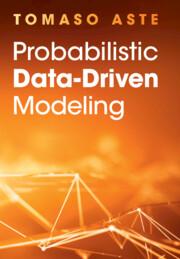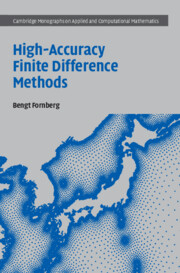Refine search
Actions for selected content:
2540 results in Computational Science
Appendix Manuscripts in Focus
-
- Book:
- The Art of Inpainting
- Published online:
- 22 May 2025
- Print publication:
- 22 May 2025, pp 178-182
-
- Chapter
- Export citation
Preface
-
- Book:
- The Art of Inpainting
- Published online:
- 22 May 2025
- Print publication:
- 22 May 2025, pp xi-xii
-
- Chapter
- Export citation
3 - Non-Local Inpainting Methods
-
- Book:
- The Art of Inpainting
- Published online:
- 22 May 2025
- Print publication:
- 22 May 2025, pp 52-114
-
- Chapter
- Export citation
Frontmatter
-
- Book:
- The Art of Inpainting
- Published online:
- 22 May 2025
- Print publication:
- 22 May 2025, pp i-iv
-
- Chapter
- Export citation
5 - Methods Inspired from Cultural Heritage
-
- Book:
- The Art of Inpainting
- Published online:
- 22 May 2025
- Print publication:
- 22 May 2025, pp 162-174
-
- Chapter
- Export citation
Index
-
- Book:
- The Art of Inpainting
- Published online:
- 22 May 2025
- Print publication:
- 22 May 2025, pp 204-206
-
- Chapter
- Export citation
1 - Introduction
-
- Book:
- The Art of Inpainting
- Published online:
- 22 May 2025
- Print publication:
- 22 May 2025, pp 1-12
-
- Chapter
- Export citation
6 - Conclusions
-
- Book:
- The Art of Inpainting
- Published online:
- 22 May 2025
- Print publication:
- 22 May 2025, pp 175-177
-
- Chapter
- Export citation
About the Authors
-
- Book:
- The Art of Inpainting
- Published online:
- 22 May 2025
- Print publication:
- 22 May 2025, pp ix-x
-
- Chapter
- Export citation
References
-
- Book:
- The Art of Inpainting
- Published online:
- 22 May 2025
- Print publication:
- 22 May 2025, pp 183-203
-
- Chapter
- Export citation

Probabilistic Data-Driven Modeling
-
- Published online:
- 17 May 2025
- Print publication:
- 01 May 2025

High-Accuracy Finite Difference Methods
-
- Published online:
- 16 May 2025
- Print publication:
- 05 June 2025
Index
-
- Book:
- Probabilistic Data-Driven Modeling
- Published online:
- 17 May 2025
- Print publication:
- 01 May 2025, pp 429-432
-
- Chapter
- Export citation
16 - Time Series and Probabilistic Modeling of Evolving Processes at Different Timescales
- from Part III - Model Construction from Data
-
- Book:
- Probabilistic Data-Driven Modeling
- Published online:
- 17 May 2025
- Print publication:
- 01 May 2025, pp 301-328
-
- Chapter
- Export citation
7 - Entropies
- from Part II - Foundations of Probabilistic Modeling
-
- Book:
- Probabilistic Data-Driven Modeling
- Published online:
- 17 May 2025
- Print publication:
- 01 May 2025, pp 99-112
-
- Chapter
- Export citation
Appendix F - Expectation Maximization
-
- Book:
- Probabilistic Data-Driven Modeling
- Published online:
- 17 May 2025
- Print publication:
- 01 May 2025, pp 410-414
-
- Chapter
- Export citation
Appendix G - Bad Modeling
-
- Book:
- Probabilistic Data-Driven Modeling
- Published online:
- 17 May 2025
- Print publication:
- 01 May 2025, pp 415-418
-
- Chapter
- Export citation
Part I - Preliminaries
-
- Book:
- Probabilistic Data-Driven Modeling
- Published online:
- 17 May 2025
- Print publication:
- 01 May 2025, pp 1-2
-
- Chapter
- Export citation
Contents
-
- Book:
- Probabilistic Data-Driven Modeling
- Published online:
- 17 May 2025
- Print publication:
- 01 May 2025, pp vii-xii
-
- Chapter
- Export citation
References
-
- Book:
- Probabilistic Data-Driven Modeling
- Published online:
- 17 May 2025
- Print publication:
- 01 May 2025, pp 419-428
-
- Chapter
- Export citation
